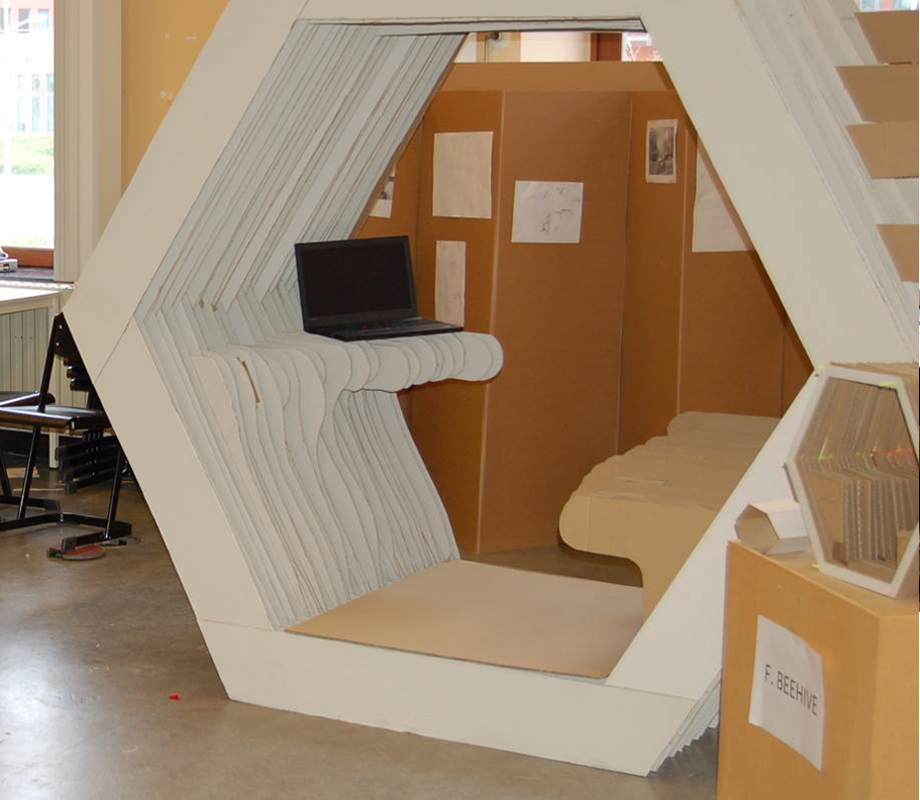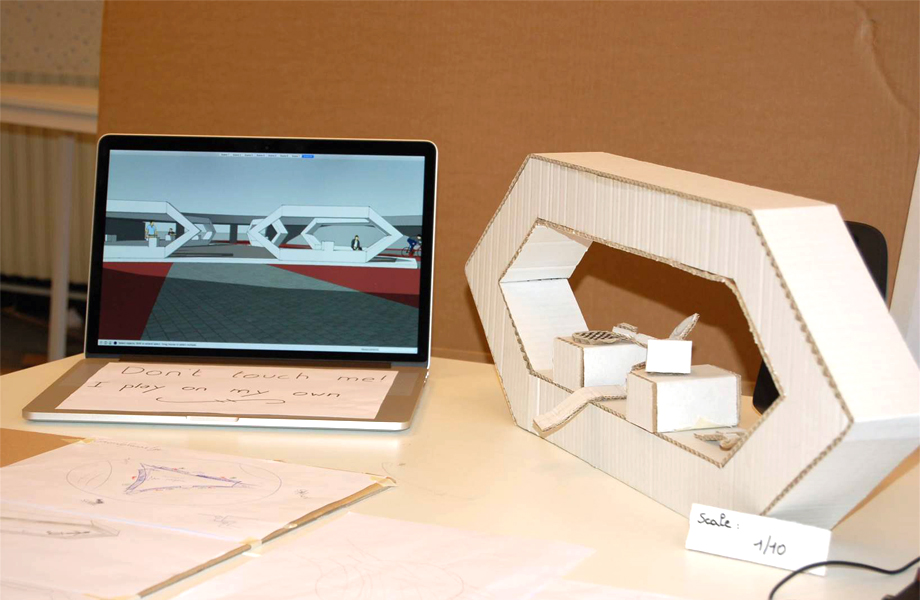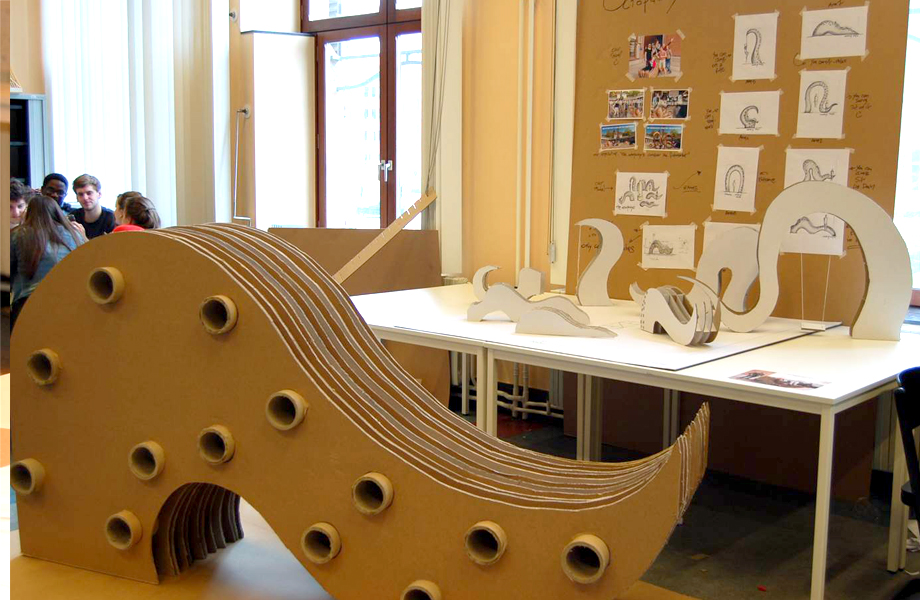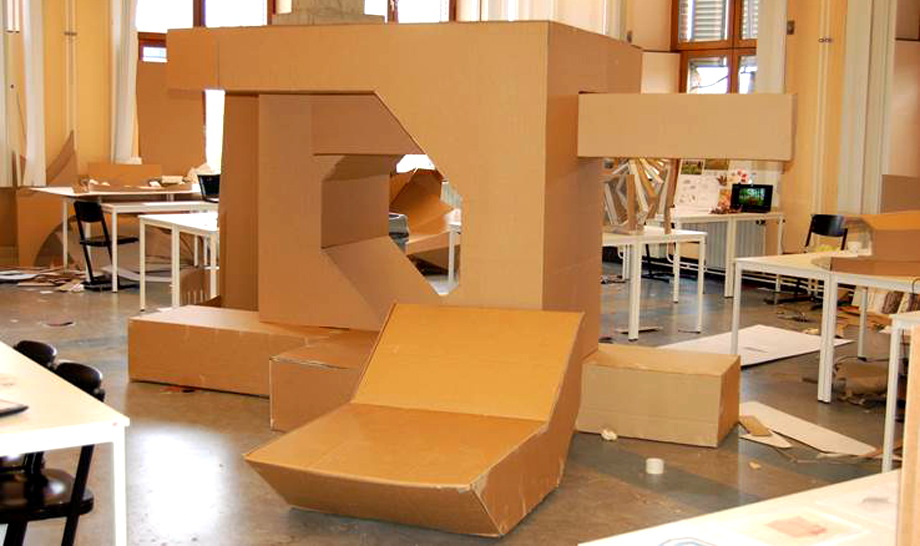Hack the City gives Brugge a Beehive Winner
After an intense week of inspiration and perspiration the winners have been declared in last week’s Hack the City event held in historic Brugge by Howest Applied Architecture/Howest Toegepaste Architectuur and supported by DS Smith.
In all, more than 80 students submitted 23 different ideas on how best to introduce an object or design that would improve and respect the city.
Mette Staal, a designer from More from Less, a DS Smith subsidiary, was onhand Wednesday to help with judging the scale mock-up submissions and decide who would be on the shortlist to win the competition.
“It’s a UNESCO World Heritage Site and they had to create something that would fit in the city and be beneficial to tourists and people living in Brugge," said Mette.

The submissions were very creative on how they would stand out and blend in at the same time. The submissions weren’t just for looking at but people could really use them
— Mette Staal, designer at More from Less
Those projects selected for the shortlist were then created in full size (up to a maximum 15.5m3) on Thursday with the overall and category winners selected on Friday.
“We had consensus from the judges, and it reflected the views of the students, that the five finalists were really a step above the other submissions,” continued Mette. “Everyone agreed too that cardboard was the perfect material for building the scale mock ups and the final full-sized designs because it is fast and flexible and you can easily visualise your ideas on both a small and big scale.”
The five finalists were built from cardboard, wood and fabric by all of the 80+ students working together.
The overall winner on Friday was the beehive: “F. Beehive”. Taking inspiration from the bees in the Queen Astridpark, the Hexagonal shape was developed into a multifunctional working/resting/climbing/bike parking object, where the structural connection became the climbing elements and integrated solar panels provided electricity. The ‘hub’ is a modular concept, usable throughout any city, and provided seemingly endless possibilities.
 The award for best concept went to "Carré Confiture” - a multifunctional object/street furniture, regulating traffic underneath the roundabout at the Bruges’ station + providing outdoor work and leisure space.
The award for best concept went to "Carré Confiture” - a multifunctional object/street furniture, regulating traffic underneath the roundabout at the Bruges’ station + providing outdoor work and leisure space.
 Best execution went to “Octopussy” - the anamorphic form of the octopus’ arms allowed a multitude of functions, and the beauty and simplicity of the execution added even more value: no glue or staples, just cardboard tubes (providing both climbing fixtures and resembling the suction caps on the arms!) holding together slices of cardboard.
Best execution went to “Octopussy” - the anamorphic form of the octopus’ arms allowed a multitude of functions, and the beauty and simplicity of the execution added even more value: no glue or staples, just cardboard tubes (providing both climbing fixtures and resembling the suction caps on the arms!) holding together slices of cardboard.
 And the Public Choice award, as selected by over 2000 people from across Europe, went to “Schnats” a complicated 3D puzzle.
And the Public Choice award, as selected by over 2000 people from across Europe, went to “Schnats” a complicated 3D puzzle.
 Congrats to the Beehive and all of the participants!
Congrats to the Beehive and all of the participants!
